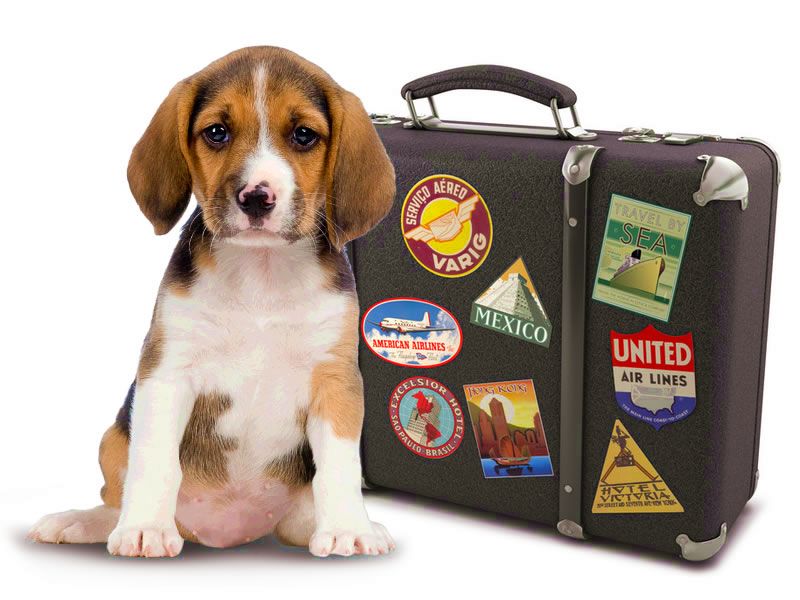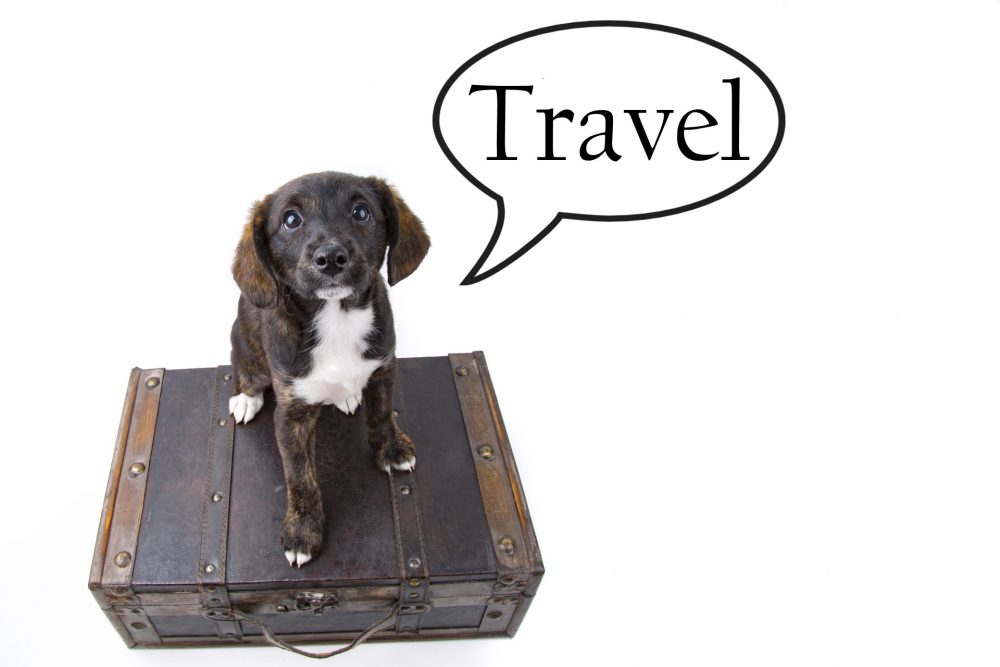Hawaii is a rabies-free state, which is why coming and going to and from the mainland can be a challenge, yet we are here to help you.
Per HDOA (Hawaii Department of Agriculture) – Hawaii’s quarantine law is designed to protect residents and pets from potentially serious health problems associated with the introduction and spread of rabies. All dogs and cats, regardless of age (puppies and kittens included) or purpose, must comply with Hawaii’s dog and cat import requirements.
Your pet needs to come in for a rabies vaccine. In 4 weeks that vaccine needs to be boosted with another rabies vaccine. In as soon as 3 weeks your pet needs to come in for the FAVN blood test. FAVN test results are normally available in 4 to 6 weeks from the date that the sample is received at the Kansas State University Rabies Laboratory. Unfortunately at this time, expedited STAT service is unavailable.
Chapter 4-29 Hawaii Administrative Rules, governs the importation of dogs, cats, and other carnivores into Hawaii. This law states that dogs and cats meeting specific pre- and post-arrival requirements may qualify for the 5-day or less quarantine program which has a provision for direct release at Honolulu International Airport after inspection. Any dog that doesn’t meet the requirements for the 5-day or less quick-release program will have to be quarantined for 30 days. Check the list to see if you meet the requirements: 5-day or less Checklist.
Please visit the Animal Quarantine Branch website at http://hdoa.hawaii.gov/ai/aqs/ for more information.
Leaving the island
Leaving to the mainland?
A health certificate and a current rabies vaccination will be needed within 10 days of your flight. All you need to do is to call and set up an appointment.
Information We May Request:
- Destination address
- Name and phone number of the person receiving the pet, if it’s not you.
- Records that include last rabies vaccination and titer.
- If you need to update your pet on its annual wellness check-up before they leave.
When you arrive for your appointment a quick exam is performed unless any diagnostics need to be done. Your pet will receive a temperature check and a rabies vaccination if needed. We will perform one more microchip scan as well to make sure all the paperwork is correctly labeled. Once the exam is over our wonderful receptionist will be getting all the paperwork together. We appreciate your patience during this time. Feel free to stock up on any heartworm/flea prevention before you leave. As long as your pet has a current heartworm test we are always happy to mail it to your new home.
Per HDOA – There are no State of Hawaii regulations or requirements in transporting dogs, cats, rabbits, guinea pigs, pet birds, rats & mice and chinchillas out of the state. However, pet owners should check with their airline and the state or country they are transporting the animal to for transport requirements.
Plan on bringing your pet with you on a trip? No problem!
If you plan on leaving and returning to the islands your pet needs to have a rabies titer done – FAVN.
Your pet needs to come in for a rabies vaccine. In 4 weeks that vaccine needs to be boosted with another rabies vaccine. In as soon as 3 weeks your pet Fluffy needs to come in for the FAVN blood test. FAVN test results are normally available in 3 to 4 weeks from the date that the sample is received at the Kansas State University Rabies Laboratory. If you will be traveling in less than 3 weeks, an expedited STAT service is available.
Since you are getting the FAVN done in Hawaii, a rabies-free state, you may go back and forth from Hawaii for three years! So if you plan on returning, this is recommended so you may return to Hawaii without going through quarantine which is 120 days at the quarantine facility.
Once you have a flight scheduled a health certificate needs to be scheduled within 10 days of your flight. When you plan on coming back, a health certificate will be needed to return. Your pet will need to be established at a clinic where you are visiting.
International Travel
Please give us a call with your place of destination and we will get you all set up to travel with your pet!
Traveling tips!
Safety Tips:
- Book a direct flight whenever possible. This will decrease the chances that your pet is left on the tarmac during extreme weather conditions or mishandled by baggage personnel during a layover.
- Purchase a USDA-approved shipping crate. The crate should be large enough for your pet to stand, sit, and turn around in comfortably, and lined with a puppy pad to absorb any accidents. Before your trip, tape a small pouch of dried food outside the crate so airline personnel will be able to feed your pet in case he or she gets hungry during a layover. The night before you leave, freeze a small dish or tray of water for your pet. This way, it can’t spill during loading and will melt by the time he or she is thirsty. Make sure the crate door is securely closed, but not locked so that airline personnel can open it in case of an emergency.
- Make sure your pet’s crate has proper identification. Mark the crate with the words “Live Animal,” as well as with your name, cell phone, destination phone number, and a photo of your pet. Should your pet escape from the carrier, this could be a lifesaver. A photograph of your pet can also be carried.
- Tell every airline employee you encounter—on the ground and in the air—that you are traveling with a pet in the cargo hold. This way, they’ll be ready if any additional considerations or attention is needed. If the plane is delayed, or if you have any concerns about the welfare of your pet, insist that airline personnel check the animal whenever feasible. In certain situations, removing the animal from the cargo hold and deplaning may be warranted. Give yourself ample time to check in with your airline. Arriving up to 3 hours before your flight can be warranted when you are traveling with a pet especially if they are going into the cargo. All their paperwork needs to be checked and of course, the security line can take some time as well. If you traveling with a pet under the seat, the carrier they are traveling in needs to be screened by TSA which is more time.
Stressed out?
Signs that your cat is stressed:
- Urinating outside the litter box
- Diarrhea or constipation
- Excessive grooming
- Excessive scratching
- Isolation
- Excessive vocalization
- Decrease in appetite
- Increased sleeping
- Aggression towards other animals
- Aggression towards people
A cat might do well during transportation, but a new place, pets, and people can be very stressful.
Signs that your dog is stressed:
- Agitation
- Panting
- Excessive salivation
- Trembling
- Barking
- Whining
- Vomiting
- Urinating/soiling
- Attempting to escape
Here are suggestions for your stressed pet:
- Have the carrier that the pet will be traveling in out in plain view. If you don’t already have a carrier, purchase one as soon as possible. Placing your pet in a carrier when they aren’t used to being kenneled the day of the flight is very stressful for them. Put their favorite toy and treats inside the crate to get them to go inside on their own. Place a bed inside and eventually, they will naturally go to lay inside. The main thing is to make it a positive experience.
- An Adaptil spray or collar can be purchased to help calm your dog. Adaptil helps calm and comfort dogs. It builds confidence and sends a message of security to help your dog adjust to new or challenging situations in their everyday life. Adaptil mimics this natural appeasing pheromone that nursing mothers emit to help dogs of all ages feel safe and secure when they encounter new or challenging situations. It is clinically proven to help increase focus during training and reduce the stress that leads to unwanted behaviours.
- Solliquin is another option that can help support balanced behavior and relaxation. Solliquin® contains a unique combination of ingredients not found in any other product: L-theanine: An amino acid found naturally in green tea. It directly stimulates the production of alpha brain waves, which create a state of deep relaxation, wakefulness, and mental awareness. Magnolia / Phellodendron: The combination of Magnolia and Phellodendron extracts appears to be synergistic, with the combination controlling stress and anxiety more effectively than either compound used alone. Whey Protein Concentrate: Contains NMXSLQ05®, a trademarked high-quality protein source that supplements ten essential amino acids including the precursors of glutathione and serotonin.
- Feliway spray can be purchased to help calm your cat. FELIWAY CLASSIC pheromones, or “happy messages”, are perceived almost immediately by the cat and results in a decrease in signs like peeing outside the litter box or scratching. These “happy messages” are safe to use in any cat. Cats communicate through natural messages released in the air (called pheromones). These feline odorless messages are only perceived by other cats. People and dogs are not affected.
- SENTRY calming collar is a relaxing pheromone collar that can be used for cats. SENTRY Calming Collars use patented GOOD Behavior pheromone technology. Using a pheromone that mimics the one mother cats produce to calm their kittens, the collars are clinically proven to reduce or eliminate stress-related behavior such as inappropriate marking, destructive behavior, clawing, and anti-social behavior. Collars help alleviate problem behaviors triggered by travel, thunderstorms, fireworks, and new social situations. This collar continues to release calming pheromones to your cat for 30 days. It can be used for cats of all ages and breeds without long-term side effects.


